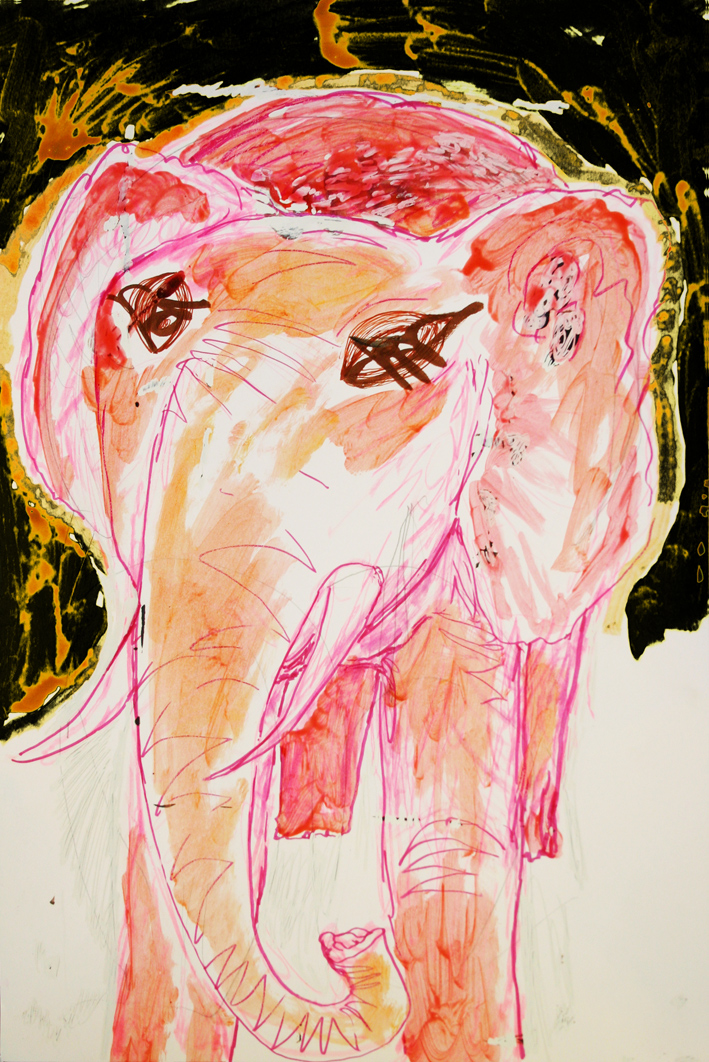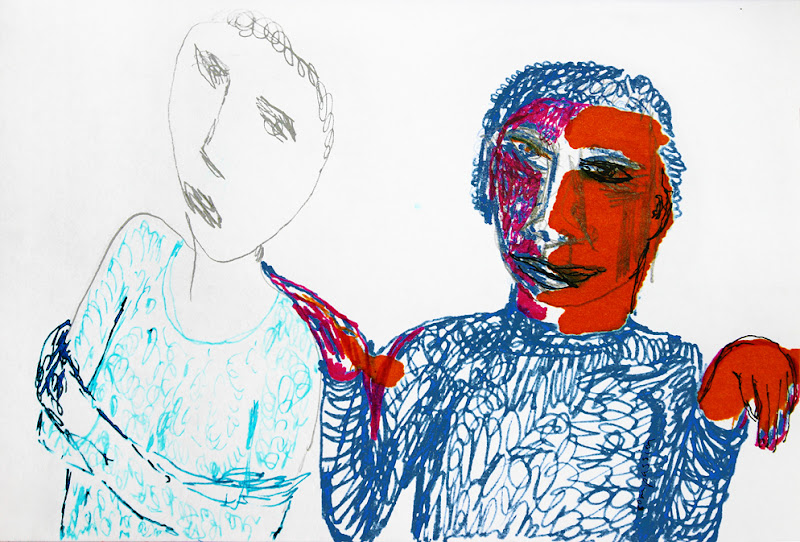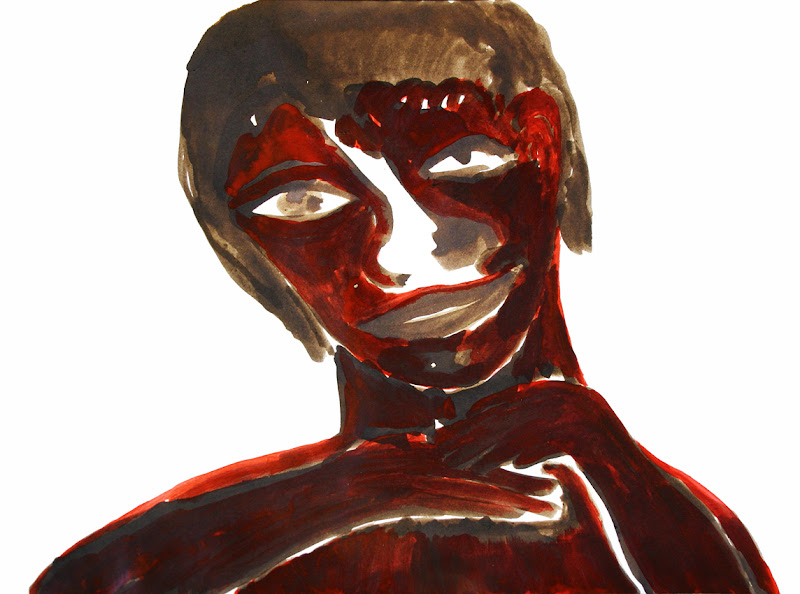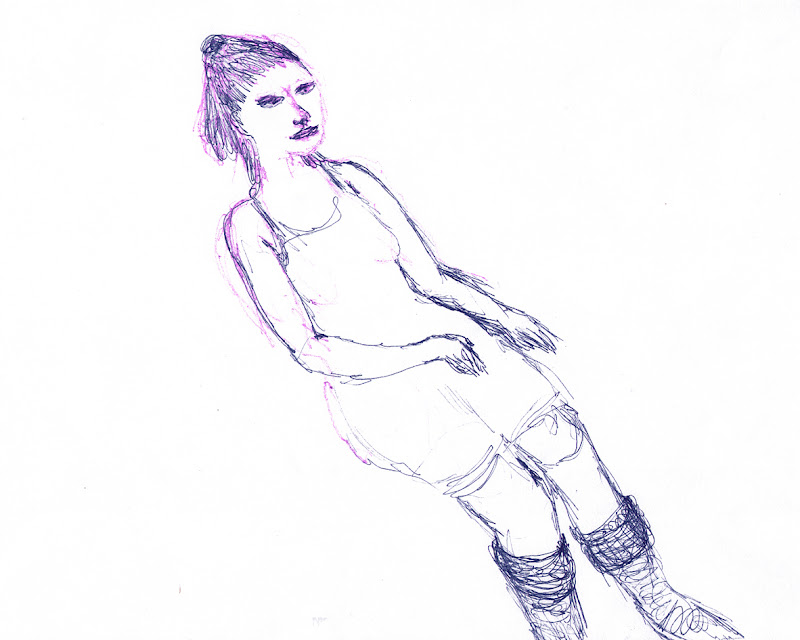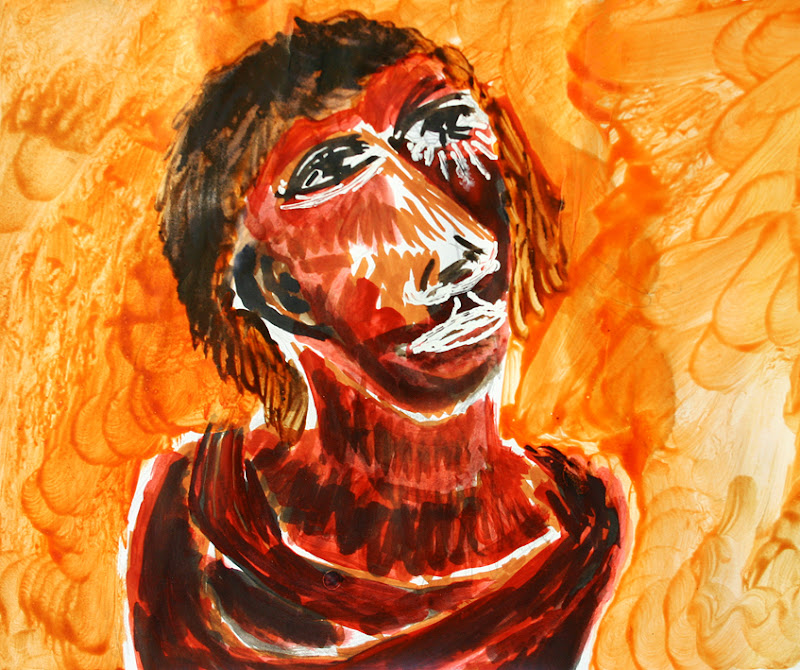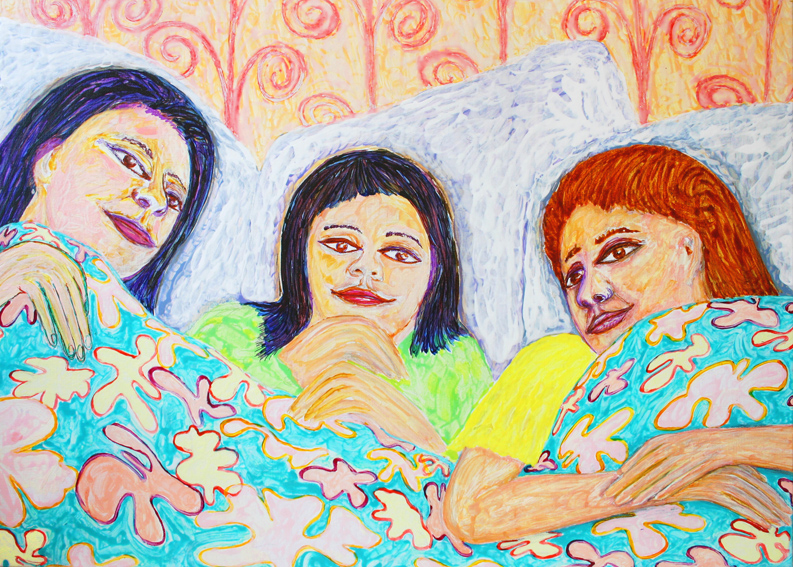in the previous post, i wrote from the premisse -for the time of that post being, for the sake of argument- that there is a proximity of nudity and sex.
however, this proximity is largely fueled by our own society's
prudishness. in many more cultured `primitive' societies (in a warmer climate than our dutch one, i admit), nudity is/was a normal state of affairs, and not associated with sex at all.
this phenomenon can be easily observed for oneself, by visiting a sauna (in our parts of the world, people are generally naked in the sauna) or a nudist beach or similar. when everyone is naked, nudity quickly becomes normal, and the sexual part of it diminishes rapidly.
there is another effect of nudity which then becomes clear (when we have stopped associating it with sex). namely, nudity often dissolves status. nudity often dissolves power. we are all equal animals, under the naked sun.
yet many people are embarrassed by nudity, be it nudity of others or their own. this again in my eyes has largely to do with society's strange norms on beauty, ideal body proportions, sex, but also on openness, vulnerability.
&&&&&&
we dress up, to cover ourselves.
cover your ass...this expression is not coincidental. and `cover your ass' in my eyes is a very big contributor to the sabotage of societal change and improvement. when searching for `cover your ass', observe that google does not auto-suggest this search term...because ass is considered a possibly offensive word by google...how hypocritical can we become?
conversely, when we are naked, we become ... in a sense open, unveiled, unthreatening, vulnerable, power-less, unequipped for violence, status-less, unmarked by social/societal trappings,...although of course we are then clearly man or woman.
but look around you, in our dressed world. is not everybody almost immediately distinguishable as man or woman? we seem to think this a very important distinction, and whole marketing campaigns are based on this difference. actually, our society is almost obsessed with sex and gender difference to the point of mental ill-health. certainly when you compare it to many of the easy, uncomplicated `primitive' societies i mentioned earlier.
so this is where our hypocrisy becomes clear. we are obsessed, as a society, with sex and sexuality...but we frown upon nudity, and google's safe search and search-suggestions shows that we actively try to maintain this situation in which nudity is charged...perhaps BECAUSE we wish to keep it charged, because of our fixation on sex.
&&&&&&
can there be a more innocent scene than naked children playing on the beach? however, things have gone so far that an artistic photographer will scratch his/her head twice before displaying pictures of naked children...because almost certainly someone will cry: abuse! porn!
but the world press photo award invariably goes to a photographer who has managed to capture a moment of great human tragedy...often extreme violence due to war, terrorism,...
%%%%%%
this is the sad sad situation in which i find myself as an artist. for years and years, nudity didn't interest me very much, because i saw it as a cliché. in classical art, i often saw nudity which struck me as artificial, maybe even as a cover-up for erotic desires without daring to be explicit about those desires. in more modern art, i saw a lot of nudity which struck me as a cliché also, in its (perceived by me) intent to shock, or to show the daring of the artist, or ...
but lately i have come to realize that all these so-called liberations of the sixties and seventies and... haven't liberated us in the least. not really.
in a society liberated from this sex-obsession, nudity would not be such a problem. and sexual violence would be virtually absent. sexual violence in our society occurs appallingly frequently, but of course no one talks about it.
%%%%%%
and what about sexual exploitation? in our society this is extremely appalling also. the scale of sexual slavery in prostitution-related business is truly shocking. in this, our own oh so `developed' society. and nobody talks about it. we have `liberated' tv-shows, in which mostly youthful people show any body part in any situation...mostly under influence of a lot of alcohol or other drugs. but it is a rare occasion indeed to see a documentary on the sexual slavery involved in prostitution-related business.
§§§§§§
so, you tell me why i'm finding myself reconsidering nudity as a cliché. i recently posted a painting called `
the artist is always naked' which reflects some of this reconsidering. but there are many other connotations, which i find myself drawn to investigate. nudity and innocence, for instance.
on wikipedia, you can also read on
nudity and art, and
nudity in general. and what about google/blogger/blogspot?
well, i simply consider whatever i post on this blog to be artistic...therefore covered by the exception rule.
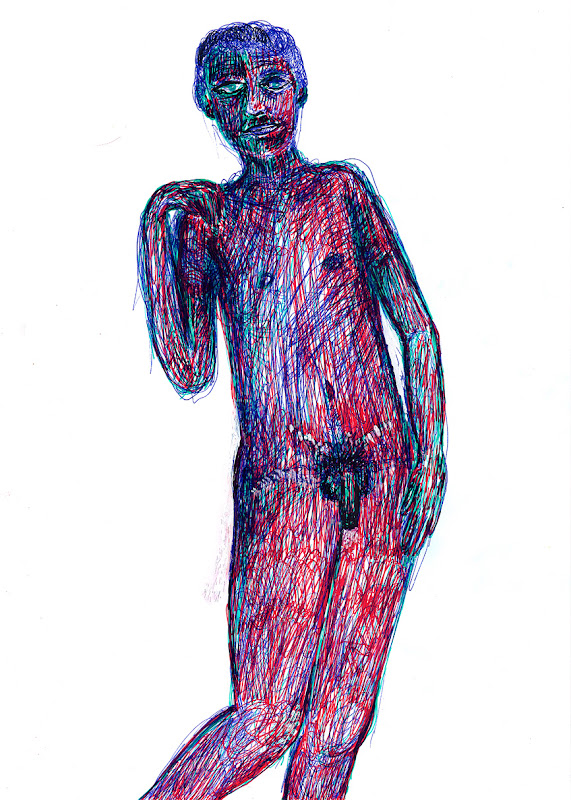 the artist is always naked ii
the artist is always naked ii (own work, 2012, 21 x 30 cm, click on the image for an enlargement)
and as a reference to the `primitive' society i mentioned:
 self-portrait as naked shaman
self-portrait as naked shaman (own work, 2012, 21 x 29 cm, click on the image for an enlargement)


